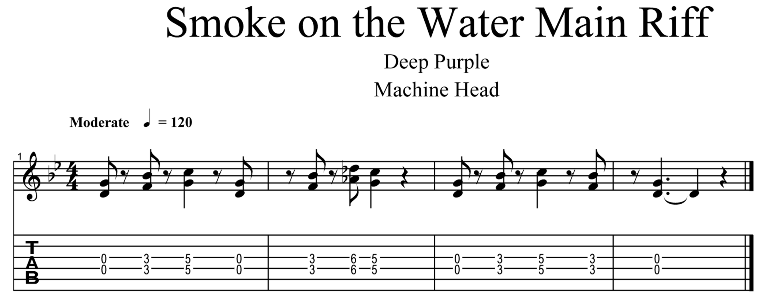Just like every new language, learning the ” notes” on a guitar is similar to learning a new alphabet – It’s a little tricky to get the order down at first but getting an idea of it is guaranteed to help players learn and write songs faster.
The reason we use guitar notes for songs is to identify and note the pitches that are heard when we pluck strings. Depending which strings are plucked and what part of the neck we fret, a specific pitch is created which corresponds to a specific note.
By placing fingers on various frets along the neck, you change the pitch of the open string. This is the foundation of playing a chord, which can be defined as a set of notes. We will get into chord theory in another lesson so for now we will focus on the order of where the full 12 notes lie on a six stringed guitar:
Check out this video lesson on HOW TO FIND THE FRETBOARD NOTES
Excluding B-C and E-F you will notice that every letter has a note between the next letter which are known as “half-steps” or “semi-tones” they’re kind of like the growing period to get to the next step…these are considered “sharp” notes (#) as you go higher and ascend in pitch However, if your going lower down in pitch then your notes would be considered sounding “flat” (b). These half-steps are also known as “accidentals”
While you can have other tunings such as CFCA#G#C, the most common tuning is standard so we will use that. You now know how to identify and move through the neck, because regardless of tuning, the order of the alphabet stays the same which is:
Plucking a string without any fingers on the frets or the neck creates the same pitch that the string is tuned to. This is called an open string or an open note. With each fret comes an increase in the half-step, or a full step in the cases of B-C and E-F
An “octave” higher is where you can find the same note on a guitar but in a higher or lower pitch. Open strings increase octaves every 12th fret. An increase in octaves brings a repeat of the pitch of our open string, yet it is doubled if it’s an octave higher.
You’ll notice dots on 99.9% of guitar. That’s a good way of keeping an eye of where the next steps are on your guitar. Now that we have an idea of how notes form and move along the guitar, let’s reiterate.
Pitch – perception of sound frequency when playing an instrument
Note – pitch formed when picking and fretting strings
Chord – set of notes that form a pitch
Step – the next increase in the note (ie A to B is one full step)
Semi-tones/half-steps/accidentals – the notes between full steps
Octave – eight steps between one pitch and another to double or half its frequency.
If you are just starting out with guitar, I recommend you to check out our:


